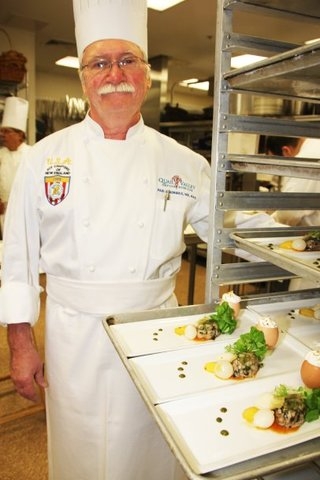
Curriculum Content Built from Flavor Outcomes
31 March 2025Build a culinary education around flavor components with courses like Taste 101, Smell 121, Communications: Storytelling.
By Paul Sorgule, MS, AAC
Feedback & comments: This email address is being protected from spambots. You need JavaScript enabled to view it.
There is a difference between change and change thinking. Change is driven by internal or external factors creating a need to move in a different direction. Sometimes those changes move us in a positive direction while other times they pull us away from something that is causing us concern. Change thinking is an ever-present way of looking at everything we do through a different lens. In a change-thinking environment, we may invent or reinvent in anticipation of a need or create a need well before others have thought it necessary. A “what’s next” or “what about” state of mind leads to great innovation, loads of excitement and the creation of niche businesses or products that inspire others.
Here is a change example to chew on as you continually think about a culinary education’s product and service. When contemplating why a customer chooses one food experience over another – flavor becomes an important decision driver. Restaurants certainly respond to this by testing the palates of those who walk through their doors, but do they consider how flavor is built? The same can be said about culinary schools and their curriculum. We certainly emphasize our interpretation of flavor in our lesson plans, but is our grasp of this complete? Do we successfully see flavor competence as a measurable outcome?
Flavor is a combination of taste, smell, texture (touch), sight and sound but also context, storytelling and even education. (You might want to read the article in this month’s GMC, “Taste Happens in the Brain (Not Just the Mouth)”) What if (change thinking) a curriculum was built from the flavor outcomes rather than a list of courses and their pre-determined content? What if, instead of the common list of progressive courses nearly every curriculum includes, your content was built from the components of flavor?
What might a course entitled TASTE look like, feel like and how would it be presented? How would students interact with such a course and how would it be assessed? What would courses in SMELL, VISUAL IMPACT, SOUND, or TEXTURE look like? How would we teach the factors of CONTEXT (the flavor of a dish can be enhanced by whom a guest is dining with, the occasion or the interaction with service staff), or STORYTELLING? Think about a curriculum built from this method of change thinking.
Imagine TASTE 101 – A course that delves into the way our taste receptors interpret sweet, sour, salty, bitter and umami. Students will focus on the science of taste through processes such as the Maillard Reaction, the interaction with multiple ingredients and how taste combinations evolve, how the sequence of cooking methods used can modify the flavor outcome, and how the use of spices, herbs and seasoning mixtures can alter the experience of physical taste. Assessment will be based on blind tastings and ingredient identifications as well as challenges to reach a particular taste outcome through the addition of those spices, herbs and seasonings.
Imagine SMELL 121: Humans have thousands of olfactory receptors that help identify specific nuances that distinguish one ingredient, one cooking process and one unique outcome from another. It is possible to learn those aromas, to imbed them in one’s subconscious memory so a cook can even envision what a preparation will smell like even before it is prepared. When a cook is asked to think about the aroma of sauteed onions or garlic, the smell of bacon cooking, crusty bread being peeled from an oven, or a steak grilling on an open flame, the mind can activate a memory to bring that aroma to the surface. By the end of this course, students will be able to identify an array of ingredients, cooking processes, food combinations, and other indicators relating to a preparation, by smell.
Chefs are storytellers who use the environment of the restaurant, the way a menu is designed, the tabletop setting and the delivery through service staff to get their message across. Imagine replacing a traditional creative writing and/or speech class with STORYTELLING. How would that change student enthusiasm for communication and help to build confidence in the process?
Consider how students might sense the importance of each flavor-dynamic component and how when combined they can truly understand how to cook, why we use specific processes and what reactions consumers would have to the art of the story. Oftentimes the difference between a good cook and a great one, a respectable restaurant and a dynamic one, is found in its understanding of flavor and how it’s interpreted throughout the dining experience.
This may seem a bit over the top, and I am not inferring a program should move in this direction but rather how a learning organization like yours might benefit from a CHANGE THINKING model. Consider the possibilities.
PLAN BETTER – TRAIN HARDER – EMBRACE CHANGE
Paul Sorgule, MS, AAC, president of Harvest America Ventures, a mobile restaurant incubator based in Saranac Lake, N.Y., is the former vice president of New England Culinary Institute and a former dean at Paul Smith’s College. Contact him atThis email address is being protected from spambots. You need JavaScript enabled to view it..
